Beethoven: This one is a bit less unimaginative
mainWelcome to the 120th work in the Slipped Disc/Idagio Beethoven Edition
String Quartet No. 14 in C sharp minor op. 131
Every superlative in the critical lexicon has been lavished on the opus 131. It is known as ‘the Everest of string quartets’. Also as Parnassus, pinnacle, inexhaustible and ineffable – ‘the most superhuman piece of music that Beethoven ever wrote.’ Beethoven himself places this work beyond the bounds of normality by writing seven movements, an unprecedented extravagance, and testing our emotional tolerance in every direction. By blowing apart the format established by Joseph Haydn, he leaves the listener not knowing what’s meant to come next.
The unanswerable question is, did Beethoven know? Did he have this structure in mind, or did he go from episode to episode not knowing where it might lead? When the publisher Schott asked for an explanation of the unwieldy manuscript, Beethoven replied that it was ‘zusammen gestohlen aus Verschiedenem, diesem und Jenem’ (put together from stolen odds and ends’). Believe that, if you like. Believe also, or not, a statement by the violinist Karl Holz that Beethoven thought this the greatest of his 16 string quartets – only to contradict himself immediately by saying ‘art demands of us that we must not stand still,’ a hint that he has greater things in preparation on his desk.
He is playing games, teasing his interlocutors. ‘Thank God there is less lack of imagination than ever before,’ he told the violinist Karl Holz. Schubert, demanding to hear the work five days before his own death in November 1828, said: ‘After this, what is left for us to write?’
Although it was not much performed in the next few decades, this quartet attracted powerful commentaries, of which the most resonant came from Richard Wagner who, writing in 1870 for the centenary of Beethoven’s birth, aimed to establish Beethoven as a man who changed the world, his own personal precedessor. Wagner drew attention to the rough and raging finale, a passage which may have influenced his seaborne operas, The Flying Dutchman and Tristan and Isolde: ‘Tis the dance of the whole world itself: wild joy, the wail of pain, love’s transport, utmost bliss, grief, frenzy, riot, suffering, the lightning flickers, thunders growl: and above it the stupendous fiddler who bears and bounds it all, who leads it haughtily from whirlwind into whirlwind, to the brink of the abyss – he smiles at himself, for to him this sorcery was the merest play – and night beckons him. His day is done.’ Maybe he’s hearing Götterdämmerung.
Virginia Woolf used elements of this quartet in her novel The Waves. T S Eliot had both opus 131 and opus 132 in mind while writing his Four Quartets: ‘Time present and time past/Are both perhaps present in time future, /And time future contained in time past. /If all time is eternally present /All time is unredeemable.” Beethoven is reaching into the future, he intimates, to make sense of the present. Or vice versa.
Episode nine of the HBO series Why We Fight (2001) used the 6th movement to accompany footage of a devastated German town in the aftermath of Hitler’s death. Yaron Zilberman’s movie A Late Quartet (2012) featured a string quartet grappling with their own failing health and crumbling relationships through Beethoven’s opus 131. ‘What are we supposed to do,’ demands one of the players, ‘stop – or struggle?’
Latterly, American youth orchestras have fused the opening of opening of opus 131 with Kanye West’s hip—hop track ‘On Sight.
What these diverse and challenging resonances demonstrate is the extraordinary immediacy that this quartet has exerted from its inception, while remaining as unfathomable in its essence as the Sphinx of Giza.
The first movement, which is slow, was described by Wagner as ‘the most melancholy sentiment in (the whole of) music’; others find it uplifting. Two dance movements follow, both verging on the macabre. The fourth movement, lasting 15 minutes and the pivot of the entire work, is a set of seven intricate and absorbing variations. The fifth movement is a two-minute runwaway horse, followed by another two minutes of profound self-contemplation before the finale rocks completely off the rails. For reasons that will soon become apparent, I will discuss the sixth movement in a separate post.
So where, across the history of recording and more than 50 different versions, do we find clarity and illumination? Both the 1932 sessions by the Hungarian Lener Quartet and the 1936 response from the exiled Busch Quartet demand serious attention, the Lener more questing, the Busch more certain. I am further intrigued by the 1944 Musikverein recording by Wolfgang Schneiderhahn and three fellow-Nazi members of the Vienna Philharmonic unfolding a sanitised performance in which beauty is the supreme value in a crumbling world. The beauty is, indeed, intoxicating. It is also the forerunner of a kind of post-War music making by certain Austrians in which beauty itself is an atonement for past crimes. Two of the Schneiderhahn players feature in the 1952 Barylli Quartet recording, an unnerving connection.
I find the much-vaunted Juilliard Quartet – Robert Mann, Isidore Cohen (Violins), Raphael Hillyer (Viola), Claus Adam (Cello) – over-aggressive in the finale, though that may be exacerbated by execrable New York studio acoustics. The Guarneri Quartet – Arnold Steinhardt, John Dalley (Violins), Michael Tree (Viola), David Soyer (Cello) – are in all aspects preferable.
Finest of all the American performances is that of the LaSalle Quartet in 1977. Based in Cincinnati, far from the competitive pressures of New York, four Jewish refugees – Henry Meyer, Walter Levin (Violins), Peter Kamnitzer (Viola), Jack Kirstein (Cello) – backed into Beethoven in reverse, having first established their credentials as the world’s finest exponents of Schoenberg and the Second Vienna School. What they bring to this masterpiece, apart from superlative technique, is something of the T S Eliot sense of the fluidity of time, flitting back and forth between eras, informing the past with possibilities of the future. Each time I listen I learn something new, something I had missed before. I miss the high-minded ethos and utterly relaxed lifestyles that these four fine men brought to their art. I miss the world they inhabited.
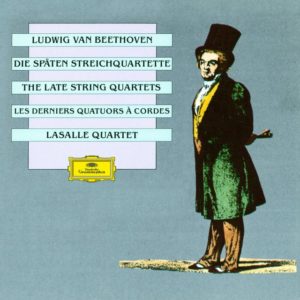
Of 21st century recordings, the Ebène Quartet are both elegant and athletic, the Cuarteto Casals are wonderfully wistful and the Emersons are simply excellent. The Quartetto Italiano have unforgettable phrasing in the finale, but I like the Takacs Quartet best for spice and fire and a sense of the joys and sorrows that are common to us all.
And we still haven’t got round to discussing the sixth movement. That’s coming up here.

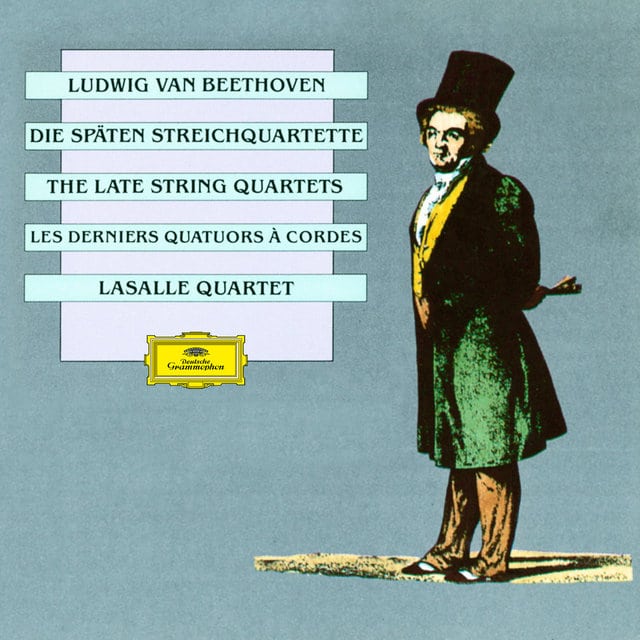
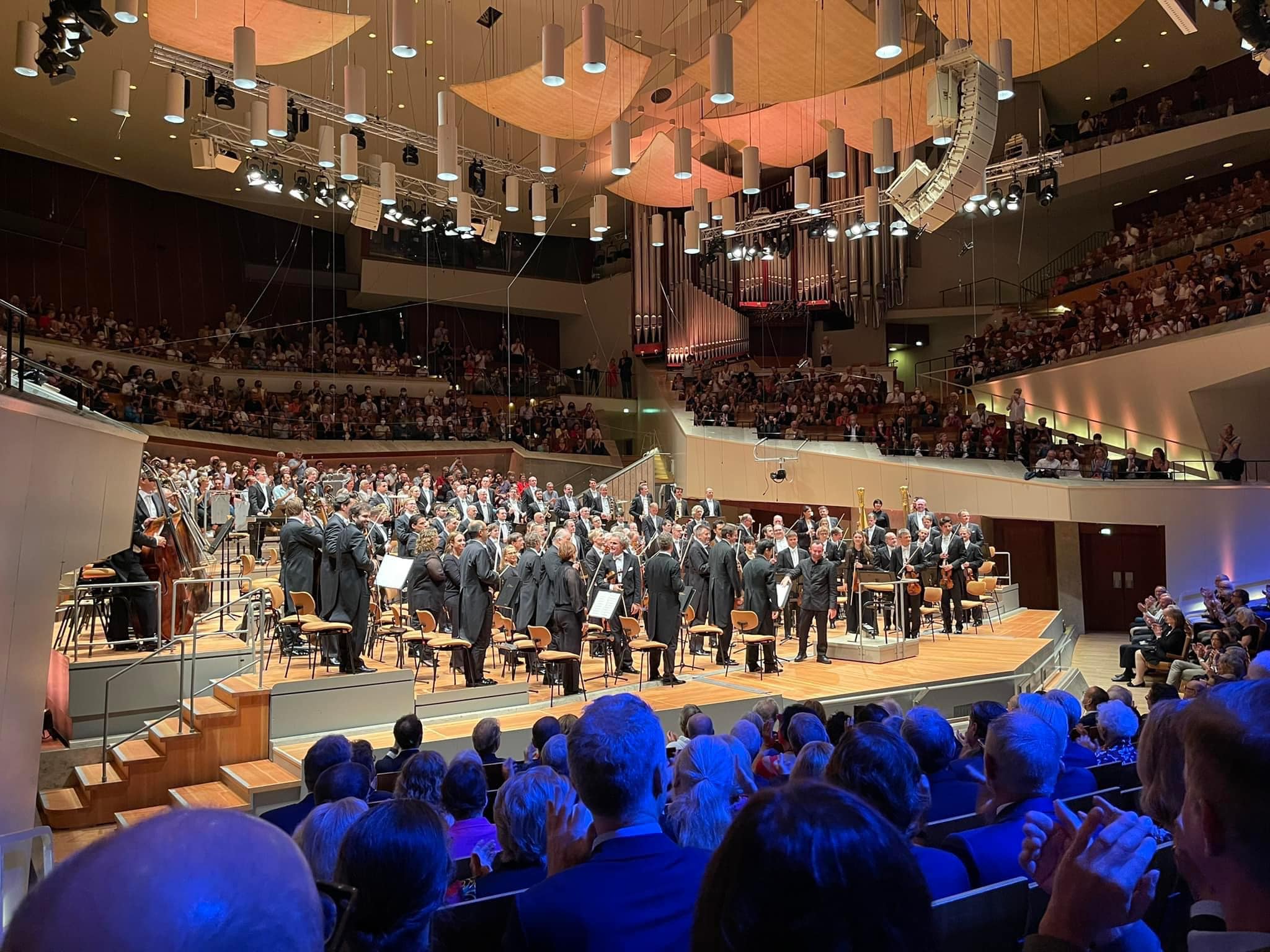
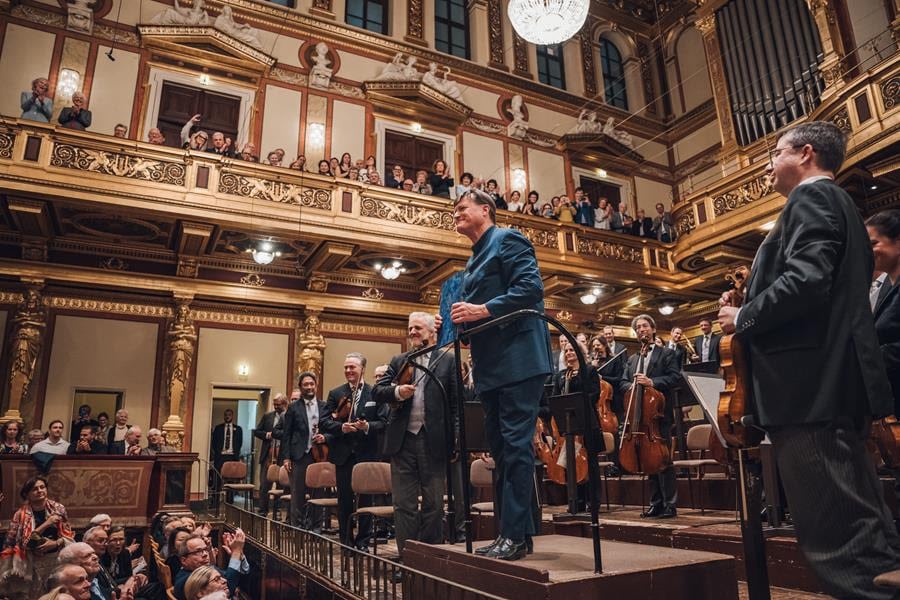
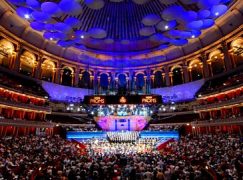
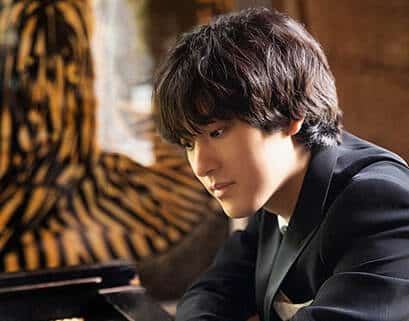
The LaSalle 2nd Viennese boxed set are absolutely my all-time favorite string quartet recordings. Such challenging music to communicate…I fell in love in college and haven’t listened to it in a few years. Can’t wait to hear their Beethoven! Thanks NL
It’s still Cuarteto Casals.
It seems to me that all those exaggerated enthusiasms throughout history about this work are both well-deserved and an easy demonstration of one’s own ‘understanding’ – and very safe. If you burden the work, already burried under numerous bouquets, with your own little flower, you hope to be seen as one of the ‘elect’. Hence the emptiness of many of those verbal embellishments.
It is a beautiful and strong work, but not so non-classical as it may seem at first hearing. All the movements are interpretations of classical formal ideas: fugue, sonata form, rondo, scherzo, aria, variations, etc. Just interpreted very personally and full of ideas. Like all the other quartets of B.
Can you comment on the significance of the key c sharp minor if any, seems an odd key for a quartet. I suppose he did not begin by saying I will write one in c sharp minor, it just happened that way or does it have an underlying meaning? See my comment on his autopsy above if interested. Paget’s disease is a distinct possibility.
Only the 1st and the last mvt are in C# minor. It’s odd indeed. But I think he choose the key for the 1st mvt for its remoteness, its reflective nature, as if something from another world. The mvt ends on a unisono on C#, and when the music ‘glides’ easily into the next mvt, which is all light and fluent, the key is D, so the C# of the end of the fugue works as a leading tone towards the D. The effect is beautiful and highly surprising because the keys of C# and D are extremely remote from each other, except as a chromatic leading tone relationship. And that is how it works, to my feeling. For a classical work this key relationship between movements is highly unorthodox, it is a trouvaille.
That he choose C# again for the finale may be due to the wish to create a rounding-off in a structurally tonal sense, after all the wild excursions, and to give the bitter music again a touch of the ‘beyond normal’. The music sounds like someone tugging at the bars of his prison cell, a feeling we all may have from time to time.
Your essay only understates the encompassing vision captured in the music. I am happy this was available to me all through my adult life. Thanks.
This is one of the rare string quartets that I enjoy performed by an orchestra.
Bernstein discography was pretty much a hit or miss. More misses than hits. But some of the hits were quite impressive, as is the case of his recording of this opus with the VPO.
There is a very good video of Bernstein conducting this Quartet:
https://youtu.be/wYGTurA-5bA
Btw, Andre Previn also liked to perform the orchestra version, and he too recorded it with the Vienna Phil.
A musicologist might be able to answer whether this is the first major string quartet in music that has been composed as a sequence of distinct movements that are meant to be performed without any break between them.
The practical and philosophical question then arises– if the movements are played without interruption, should the performers be wary and avoid excesses of tempo changes between these movements? Readers may be interested in the recent Naxos CD by the Fine Arts quartet of ‘rarities’, which include an earlier version of the poignant opening movement. In this CD, this movement ( standing by itself ) lasts little more than 6 minutes. Beethoven’s tempo indications here are ‘Adagio espressivo’, rather than the final version’s ‘Adagio ma non troppo et molto espressivo’.
The rightly admired Q Italiano performance has an extremely spacious 8’50 for the opening. The Hagen Qt, whose Beethoven quartet recordings don’t seem to attract as much praise as they should, compared to for instance, the Takacs cycle, also take this relatively slowly at 8’18. Otherwise, their performance styles are quite divergent to the Italians. ( And which other quartet has exceeded the Hagens for impeccable intonation and fanatical rhythmic unanimity in late Beethoven? Their Gosse Fuge is astonishingly swift and a technical tour de force.)
Not easy to find these days, but the Vegh Quartet’s second cycle (on the Astree Naive label) from the early 70th is for me among the finest ever recorded. and the op. 131 is a particular highlight that really must be heard. And the Talich’s version must also be added to the above list.
Agreed, I have Vegh 1952 mono and Vegh 1978 stereo, the latter having better sound. Yes I have Talich too, very good but does not have the same depth as Vegh.
The text provides no link to the recording of the Schneiderhan Quartett. Op. 131 was recorded with Magnetophon technology (clean, very good monaural sound) in 8 September 1944, and it was issued on CD in the label Orfeo together with the first Rasumovsky Quartet (op. 59, 1), recorded in 29 march 1945. Rather crazy recording dates, one wonders about the musician’s psyche those Days, and how they managed to play that beautiful way (maybe a feeling hat it could have been the last time they played together?). Of all ‘historical’ recordings of these quartets that I know these are in a class of their own (the ‘Nazi factor’ can be disturbing).
Radio 3 broadcast Beethoven – String Quartet No. 14 in C sharp minor op. 131 (Mosaiques) HIP.
What do you folk make of their light foot on the vibrato pedal? I must say I like theirs, the Vegh 1978 is also excellent.
https://www.youtube.com/watch?v=5hii2szPQ4Q
Some recent reviews of Beethoven’s autopsy findings, by Mai and Oiseth suggests he may well have had osteitis deformans aka PDB – Paget’s disease of bone. There is no evidence of Syphilis or TB.
Mai reports that a Prof Siebert carried out the autopsy, while Oiseth, says a Prof Wagner.
During his successive exhumations and examinations, apparently someone made off with his temporal bones in 1863! These would have been of great value in diagnosis. I gather, these disappeared after Prof Wagner died.
https://www.rcpe.ac.uk/sites/default/files/t_100506_a_mai.pdf
https://atlasofscience.org/beethovens-autopsy-revisited-a-pathologist-sounds-a-final-note/
(Doc Martin is a retired GP, Irish harpist and amateur composer, based in Belfast).
For me, the Amadeus Quartet is my “go to” for late Beethoven. I will certainly check out some of these other suggestions.
I hear a connection with the sparse language of the late quartets and Irish harp music. Like those Goya etchings.
Simon Chadwick, an English harp player based in Armagh has done some sterling research into the Irish harp. He plays on a copy of a harp similar to that found in the National museum in Dublin, like mine. Irish harps are wire strung unlike others, my contention is that Carolan played on one with Iron strings, brass not being generally available in Ireland until much later on in the 18th century. Today I would say brass strings are more durable as iron strings eventually weaken with oxidising, brass also gives a wonderful bell like sonority.
Here he plays an old Irish harp tune and song air, Cúileann fín (“fine head of hair”). Probably better known as “Súd é sios an rod a d’imigh sí (that there is the road she went). He uses the Edward Bunting’s live transcription from the performance of an old Irish harper, probably Hugh Higgins in summer 1792.
You can see the manuscript page here at Queen’s University Belfast: http://digital-library.qub.ac.uk/digi…
https://www.youtube.com/watch?v=iPu3h-3amKA
Huxley’s Point Counterpoint has a beautiful description of a gramophone performance of Op131
I think he was referring to the Capet quartet recording which while idiosincratic is magnificent
It was Op. 132 that was commented in detail by a personage in ‘Point Counterpoint’.
Right, I was writing from memory. But I still love the Capet performance of op. 131
The shortest movement is in G# minor, a rare key for anyone ,– Taneyev’s ecstatic, Scriabinesque Prelude & Fugue (Lilya Zilberstein!) and Bach’s necessary inclusions in the WTC, probably transposed, are the only others I think of. Mitropoulos told Cliburn to learn the Taneyev and play it for Moscow’s judges; Cliburn did but said it nearly killed him, the hardest thing he ever played.
The multiple movements again suggest a suite, like Op. 130 and Shostakovich’s examples. the opening’s slow fugue, “a day without any possibillity of joy or hope”, the brief, icy G#- minor interlude, the retrograde variations starting with the most complex first, then working backward to stasis in block chords.
Of all words about it, the best are in the 1927 centenerary book “Beethoven: His Spiritual Development” by the Irish mathematician J.W.N. Sullivan, who may not have been any of those things or even a Sullivan, but could write land knew what this music is about. Verb sap.
I had great hopes of Bermstein’s VPO version but laid it aside for the quartet’s individual concentration. Good comments here, a tribute to the subject.
Doc Martin’s Irish harperies should draw Garech de Brun from his tent, surely, as one harpy to another?
The Beethoven Haus in Bonn has archive material on op 131 you can look over autograph scores etc. I understand he dedicated it to Baron Joseph von Stutterheim, to thank him for taking his scamp of a nephew Karl into his regiment as a cadet. Apparently he turned out ok in the end.
https://www.beethoven.de/en/work/view/6029636999839744/Quartet+for+2+violins%2C+viola+and+violoncello+%28C-sharp+minor%29+op.+131?fromArchive=4920222922309632
Here is the scene in the war film Band of Brothers, where a quartet plays part of op 131 in the ruins of a burnt town.
https://www.youtube.com/watch?v=5YD-PcQ-jJM
thank you!
shana tova!
Fun Fact: the Lasalle were named for the street in Morningside Heights, Manhattan, I believe during a stint at Juilliard early in their formation.
After listening to op 131 (Vegh 1952) just now, I thought of John Donne.
https://www.youtube.com/watch?v=hVib2JMwMIM
No man is an island,
entire of itself;
every man is a piece of the continent,
a part of the main.
If a clod be washed away by the sea,
Europe is the less,
as well as if a promontory were.
as well as if a manor of thy friend’s
or of thine own were.
Any man’s death diminishes me,
because I am involved in mankind;
and therefore never send to know for whom the bell tolls;
it tolls for thee.
Thank you, Doc Martin. This magnificent passage by John Donne is not often quoted entire of itself, but needs to be to mark its quality in philosophical and metaphysical literature of the English language.
I once wondered how Hemingway knew it, then remembered he began as a sensitive young man who first tried verse while at age 19 writing his mother in Oak Park about hearing piano recitals in Chicago by Paderewski, Benno Moiseiwitsch, and Josef Hofmann (he preferred Moiseiwitsch).
William Styron mined a passage in Donne’s sermons for the title of “Set This House Afire” and printed it as epigraph. It’s a “that that” construction: “That that God who did such and so”, and “that that other did also”, recalling the grammarian’s quintuple reiteration “that that, that THAT that refers to…” but that way lies madness.
Faulkner, Hemingway, Thomas Mann, and perhaps Joyce, began as poets, only taking up novels afterward. “I am a failed poet,” Faulkner said in his Nobel laureate address in Stockholm. “We are all failed poets. It’s only after failing at poetry that we turn to writing novels.” Thomas Hardy did it the other way, confining himself to poetry, including a vast saga on the Napoleonic wars called “The Dynasts”, when his novels proved too daring for the taste of his day. “
The best performance is, of course, that of (insert the name of my favorite string quartet/s here).
thank you sir for the writeup. truly inspiring!